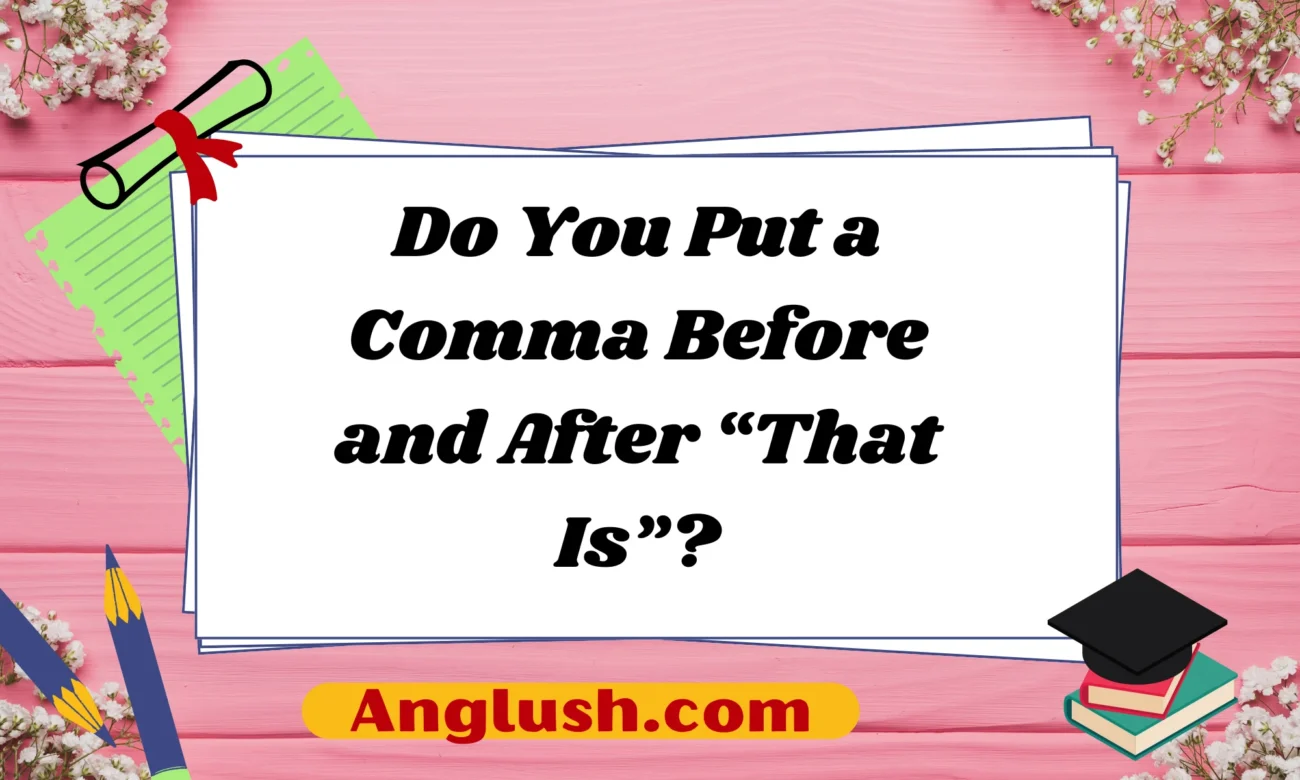Introduction
Proper punctuation is essential for clear and effective communication in writing. One of the common dilemmas writers face is whether to place a comma before and after phrases like “that is.” This phrase is often used to clarify, explain, or restate a point, but its punctuation depends on the context.
In this article, we will explore the rules governing commas around “that is,” provide examples, and offer alternative expressions that can be used in different situations. Additionally, we will include ten texting-friendly examples to illustrate how to apply these rules in everyday communication.
When to Use a Comma Before and After “That Is”
1. “That Is” as a Parenthetical Expression
A parenthetical expression is a phrase that can be removed from the sentence without changing its fundamental meaning. If “that is” is used in this way, it should be set off by commas.
✅ Example:
- She finally achieved her goal, that is, after years of hard work.
In this case, “that is” is an explanatory phrase that adds extra information but is not essential to the sentence. The commas indicate a slight pause, helping with readability.
2. “That Is” at the End of a Sentence
When “that is” appears at the end of a sentence, a comma should be placed before it, but not after, since the sentence ends there.
✅ Example:
- We need to leave early, that is.
Here, “that is” serves as an afterthought, providing clarification to the previous statement. No comma is needed after it because the sentence concludes.
3. “That Is” Followed by Additional Explanation
If “that is” introduces an explanation or clarification within a sentence, it should be set off by commas.
✅ Example:
- The project was a success, that is, we completed it ahead of schedule.
Since “that is” introduces an explanatory phrase, it is enclosed in commas to indicate that it is separate from the main idea.
4. “That Is” Without Commas (When It’s Essential)
If “that is” is used as part of the essential meaning of the sentence rather than as an interruption, commas are not necessary.
✅ Example:
- The information that is required for registration is available online.
In this case, “that is” is part of the essential phrase “that is required,” so no commas are needed.
When Not to Use a Comma Before or After “That Is”
There are instances where adding commas around “that is” can make a sentence grammatically incorrect or confusing.
❌ Incorrect:
- She wanted to visit Paris, that is the city of lights.
Here, “that is” is being used to directly define Paris, making the comma unnecessary. Instead, a colon should be used:
✅ Correct:
- She wanted to visit Paris: that is, the city of lights.
Alternative Ways to Say “That Is”
If you want to avoid repetition or make your writing sound more natural, consider these alternative phrases:
| Formal Alternatives | Neutral Alternatives | Casual Alternatives |
| In other words | In simpler terms | To put it another way |
| Namely | Simply put | What I mean is |
| Specifically | To clarify | Basically |
| To be precise | To explain further | Like I said |
| To elaborate | To put it another way | You know what I mean? |
Examples in Context
- Formal: The company is facing financial difficulties, namely, a decrease in revenue and rising costs.
- Neutral: The test will be comprehensive, in other words, it will cover all the material from the semester.
- Casual: I love all types of music, basically, anything with a good beat.
10 Texting Examples Using “That Is”
Here are ten user-friendly texting examples that show how “that is” and its alternatives can be used naturally:
- We’re meeting at 7, that is, if everyone is on time.
- You should call him first, that is, if you still have his number.
- She’s really independent, that is, she likes doing things on her own.
- I don’t like spicy food, that is, anything hotter than mild salsa.
- The event is formal, that is, you should wear a suit.
- We’ll be there soon, that is, as long as traffic isn’t bad.
- He’s not here yet, that is, unless I missed him.
- She’s taking a break from work, that is, a short vacation.
- It’s a surprise party, that is, don’t tell her!
- The exam was tough, that is, harder than expected.
These examples highlight how “that is” can be used in everyday conversation to clarify or elaborate on a statement.
Conclusion
The decision to place commas before and after “that is” depends on how it is used in a sentence. If it serves as a parenthetical phrase or introduces an explanation, commas are necessary. However, if it is part of an essential phrase, no commas should be used.
Additionally, there are many alternative ways to say “that is,” allowing for variety in both formal and informal writing. Understanding these punctuation rules and alternatives can help improve clarity and effectiveness in communication.

